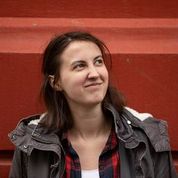Iceland enjoys one of the queer friendliest reputations in the world and it just so happens that another Pride festival is happening as this issue goes to print. But how did such a small nation in the middle of the North Atlantic establish such a vibrant scene, with events that lure people from all over the world to celebrate? And why is Reykjavík Pride in August instead of June? We went to Heimir Már Pétursson, Co-founder of Reykjavík Gay Pride, to learn more.
“There has to be a distinction between Reykjavík Pride and some protests that had happened before,” Heimir begins. “Samtökin ‘78 – established in 1978 – had held two or three very low key marches, which were more like protests than parades, down Laugavegur. Maybe 40 to 60 people took part in each one. But Hinsegin dagar í Reykjavík, now called Reykjavík Pride in English, is an independent entity. It was established in 1999 when a few elderly gay men remembered that it would be 30 years since Stonewall on June 27 that year.”
The anniversary had been initially commemorated by Samtökin ‘78 with an outdoor program (though no parade) at Ingólfstorg with about 1,500 people in attendance, Heimir recalls. “At that time I was not connected to this at all, I was just an observer. But as a journalist and also working in PR, I realized that there had been a change in the atmosphere – in the attitude of the people of Reykjavík. The work that Samtökin ‘78 had been doing changed the attitude of the public and so I contacted my friend, who was one of those aforementioned elderly gentlemen, and told him, ‘you know, we have to start to prepare for a real Pride next year. Reykjavík is ready.’”
By coincidence, InterPride, The International Association of Pride Organizers, was holding its first European annual meeting in Glasgow in October, 1999, and Heimir was sent to learn more about how to connect to the movement internationally and how to host Pride and get outside institutions involved.
“I came back with a lot of ideas. Samtökin ‘78 were very afraid of taking on more financial obligations, so I said, ‘You don’t have to. We’ll just establish an independent entity called Hinsegin dagar that has nothing to do financially with Samtökin ‘78,” he recounts. “So, a group of us started in late 1999 to prepare for the first Reykjavík Gay Pride to be held in 2000.”
With the City of Reykjavík backing them up from the start, drumming up business interest in the pink króna and attaining sponsorship, the first official parade was set up behind the police station by Hlemmur. “People said we would be laughed at because it would be such a small parade,” Heimir says. “To which I said ‘No, we will make a 300 metre long parade that no camera can get in one shot so it will always look big no matter what.’”
Well spaced and with 12,000 people behind the parade, it was huge by Icelandic standards and has only grown since.
As to why the event is in August, Heimir points to practicality. “June, of course, has Iceland’s national holiday on the 17th, after which Icelanders go on summer holiday. Meaning July is no good because nobody would be here. So, we looked at August. The first Monday of August is Frídagur verslunarmanna (a bank holiday), so we chose the week after because then everybody is back in town after travelling. Since school is coming back up for the kids, everybody will be at home.”
“I always thought that it had to be done not as a protest,” Heimir says. “It had to be done with joy as our weapon. It should be the greatest celebration people of Reykjavík had ever seen. With the parade, we’re thanking those who have come before us, celebrating their victories, our culture and our history. We’re showing solidarity with those who are not as fortunate as we are in Iceland and reminding ourselves and society that freedom and rights are never won in a single battle. They have to be fought for constantly.”
Buy subscriptions, t-shirts and more from our shop right here!
















